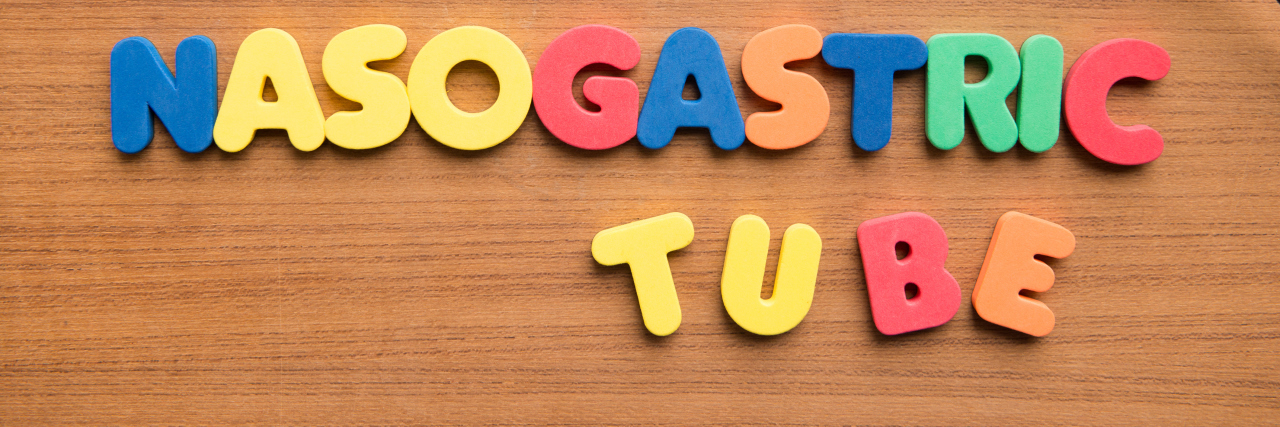Why Having a Feeding Tube for Our Child Was the Hardest and Best Decision We Made
This week is Feeding Tube Awareness Week and we wanted to share with you how much having a feeding tube has positively impacted our son’s life.
The decision for our son to have a feeding tube has been one of the hardest decisions we had to make for any of our children. I want you to know, our choice to proceed was the best choice we made for the health of our fourth son who was born with a rare condition called food protein-induced enterocolitis syndrome (FPIES).
Having FPIES means he has a delayed food-related allergic reactions There are no tests for this type of food allergy and the only cure is to avoid foods that trigger this delayed allergic response. Some babies or children are allergic to one or two foods, while others (like our son) can be allergic to multiple foods, which can further limit the diversity of the diet. Making things more complex, foods like soy and corn, which our son is allergic to, are in/on so many foods (waxes on fruit, can lining, plastic materials, etc.) making his variety of “safe foods” even further limited.
FPIES is a rare and often misunderstood diagnosis. Seven years ago, when our son was first diagnosed, much less was known as we searched for best options to provide him with the nutrition to thrive and grow with foods he wasn’t allergic to. It was a constant balancing act that we struggled with every day.
Before he turned 3 years old, a feeding tube was discussed by his medical team for months as a means to help him thrive. Despite not having a safe formula to put in the tube, it was hoped that being able to consistently give him his “safe foods” would help his body absorb more nutrients and stop the viscous cycle he seemed to be trapped in. It was a cycle of inadequate nutrition, trials of various foods in hopes of finding nutrition, inflammation causing colitis, pain from the reaction, malabsorption leading to anemia, low blood sugar, vitamin deficiencies, and weight loss. He could not get enough nutrition to make up for the malabsorption, which resulted in weight loss, further anemia, and vitamin deficiency, as well as other unknown internal disruptions to his body. This was repeated with each food trial, each failed food, and each accidental exposure or ingestion.
A feeding tube should have been an easy decision.
But would it really help him?
Neither his doctors nor we knew if it would help his FPIES, but they assured us they were confident it could help him somehow. The final decision was left to us. No one would tell us this was the right decision. We knew the odds were that it would help him, but having a tube doesn’t make allergies disappear or make you less allergic to trigger foods. So we wondered, how could it really help him?
We were going through so many emotions. It wasn’t just worrying about food trials — his nutrition was compromised because of his vicious cycle with this diagnosis. He had been on TPN, and after eight months on it, and before committing him to a port for continued and long-term TPN, his team wanted to trial one more formula through a nasogastric tube. We always remained hopeful that his body will accept the nutrition it needs, but after six weeks on this formula, it was clear his body was not accepting it (by his outward demeanor and sensory flares, and then confirmed by inflammatory markers in his blood and stool). By this time, we had already committed to the new G-tube and moved away from TPN. What would we do now? Had we made the wrong decision?
We decided to move forward with a blended diet of his safe foods, hoping his nourished body would begin to heal itself, and with nourishment, we could slow down his trials to the pace his body needed for recovery. We hoped we could slowly add more foods, as we expected to do when he was first diagnosed. He had fallen into a vicious cycle, and now his tube would break him out of this.
It has been a slow process, but we have been able to add a few new foods a year, filling in his nutrition. Along the way, he thrived. Having a G-tube with safe nutrition allowed us to worry less — about his daily caloric intakes, coaxing him to eat enough, doing “dream feeds,” and staying home to prepare his foods so they were safe and fresh.
It has given us so much more. For the first time in years, we were able to keep his blood sugars stable. He started to sleep through the night without waking up hungry. He gained weight and stabilized his hemoglobin, so he was no longer severely anemic. We relaxed around meal times, allowing him to eat his safe foods for pleasure. We relaxed our schedule at home, not having to plan the day around when, where, and how he would consume his few safe foods. This allowed us to do more things outside of the home and expose him to more of life and less of hospitals. He has truly thrived. We are truly grateful for this hardest decision.
We want to hear your story. Become a Mighty contributor here.
Getty Images via Sohel_Parvez_Haque

